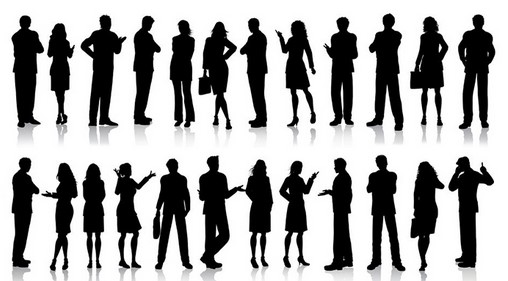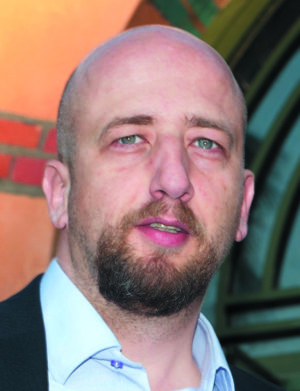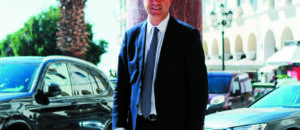Article by Michalis Markos, MBA*, Executive Business Consultant, & Professor of Business Administration/Marketing
Much has been written about the importance of body language in non-verbal communication. According to research, non-verbal communication (body language) accounts for 55% of the message we send, while only 7% is verbal communication (phrases, words) and 38% is the intensity of our voice (colouring, tone, timbre). Also, another parameter that makes body language even more important should not be ignored. Based on research, we learn mainly through vision (83%), 11% through hearing, 3.5% through smell, 1.5% through touch and 1% through taste.
When we refer to body language, we mean the way we use to send messages through gestures, body movements and facial expressions that may be conscious, subconscious or even unconscious. It also includes the appearance, the personal space that everyone needs around them, the look, and the reaction to physical contact. We can send and receive messages from others even from the place where we live, work and play or from the things we own and use. The warmth of the gaze, the smile, the strength of the handshake, the inclination of the head and body, the duration of a touch, carry more weight than the words themselves, especially when it comes to creating first impressions in a relationship (personal or professional), and often determine its development. Non-verbal communication wins first impressions, “breaks the ice” or raises walls of indifference with our interlocutor, evokes intimacy and warmth, charms, woos, creates anticipation, acceptance or provokes anger and issues silent threats. Research has shown that when what we hear does not match the implicit signals our interlocutor sends us, we tend to rely primarily on the latter to interpret his or her intentions, and even to label him or her as sympathetic or obnoxious.
Most scholars of body language have focused their attention on the following main points of decoding, which are facial expressions, the posture and movement of the head, the postures and movements of the arms and legs and the posture of the body.. Decoding these messages is not easy and it takes daily practice to acquire this knowledge, and the following 3 useful rules need to be remembered. The first rule is that you should read bundles of gestures and not individual gestures, trying to draw conclusions from different gestures. Second rule, is to look for the agreement between verbal and non-verbal communication. Finally, gestures/movements should be read in the context of the external environmental factors present at the time (e.g. cold, heat, and so on).
Facial expressions
In the first minutes of an acquaintance/contact, expressions are created (unconsciously) on the faces of others, which influence us and we draw conclusions about their character, their personality, their spirituality, their intelligence, their personal habits.
A smile is the main expression on a person and is a sign of acceptance towards the interlocutor. An authentic smile not only motivates your own sense of feeling good, but also tells your neighbors that you are approachable, cooperative, and trustworthy. Smiling affects how other people respond to you. When you smile at someone, they almost always smile back. And because facial expressions ‘trigger’ feelings of response, the smile you receive back actually and often changes the other person’s emotional disposition towards you for the better. Of course, here we are referring to the real smile and not to the feigned or fake smile which is very easily recognizable by body language scholars. Fake smiles pull back only the mouth, while real smiles pull back both the mouth and the eyes (at the goose leg-like point).
The four basic types of smile are:
a) the smile with tight lips, which shows that the person doing it has a secret that they don’t want to share,
b) the crooked smile, which means sarcasm,
c) the jaw-dropping smile, which means that it is fake and is done to amuse some people; and
d) the sideways smile, common among women who have their head lowered and turned away and their eyes raised to win (or send messages of affection) to a man.
Also, the eyes (and their pupils) play an important role in facial expressions. The eyes are the most accurate communication signals of humans because they are located in a focal point of the body and the pupils operate independently of our conscious control. If someone looks you straight in the eye, it means they are straightforward, honest and have nothing to hide. Conversely, people who avoid this direct eye contact may lack confidence, feel uncomfortable, or not tell the whole truth. It is important for us humans to be looked into our eyes, although some people do not care to do so. By looking the person you are talking to in the eye, and nodding, you show them that you care about what they are listening to. In this way you make the other person feel intimate and warm.
Especially in matters of eye contact, prolonged eye contact is considered a display of superiority, disrespect, a threatening attitude and a tendency to insult the other person. Also, very little eye contact indicates a lack of attention, while withdrawal of eye contact by lowering the eyes is considered a sign of submission. In addition, looking at someone for a few seconds longer is a sign of positive attraction and interest (ideally if combined on both sides with dilated pupils). In addition, when we see something interesting our pupils dilate, and we look more at others when we listen rather than when we talk. In addition, a prolonged unblinking gaze is used by those who want to impose, threaten, intimidate or influence others. Finally, we can tell by the eye movements of the person we are talking to whether they are on the same wavelength as us, or whether they are thinking about something different.
In terms of eyebrows, high eyebrows can give a woman a submissive look, low eyebrows, an aggressive style, while inwardly pointed eyebrows, the image of a person of interest.
*Michalis Markou, MBA
He is the instructor of the successful experiential seminar “Body Language” that he has been conducting for 12 years in various educational institutions and organizations, having trained hundreds of students and business executives in the importance of Body Language in professional and interpersonal relationships and what are the correct techniques for decoding it.
Consultant/Scientific Partner of the group FCA (FCA Capital Hellas–FCA Bank) with more than 19 years in the automotive/financial services industry in various management positions, either in the Group of FIAT (Fiat Credit/FGA Capital Hellas), or in the Group of CREDIT AGRICOLE (Emporiki Rent). At the same time, he has worked as a professor of Business Administration & Marketing, in the largest educational groups in Greece (NYC, ALFA, AKMI, DELTA, DOMI, DIDACTA, etc.).
He is a certified adult educator (EOPPEP & OAED), a Vocational Counselor of the Institute of the Association of Greek Tourism Enterprises (INSEETE) and previously he had served as Deputy Director of the Institute of Tourism. member of the Board of Directors of the National Centre for Public Administration & National Council of the National Council of the National Council of Public Administration and Local Government (EKDDA).
She holds 2 postgraduate M.B.A. degrees (Master in Business Administration) from the Higher School of Commerce of France (ESCEM Business & Management School) and the Open Hellenic University (Hellenic Open University), while he also holds a degree in Business Administration from the UK.
His articles on topics related to Business Administration, Sales, Marketing and Human Resource Management have been published in various prestigious journals & sites.













